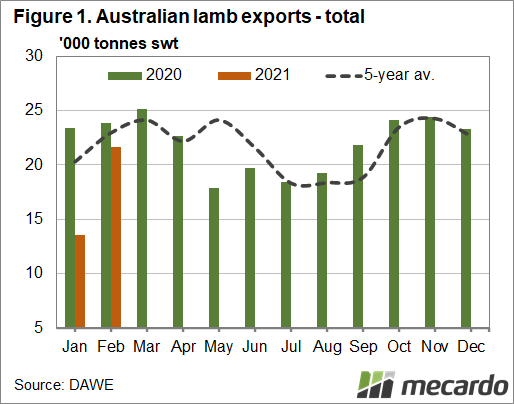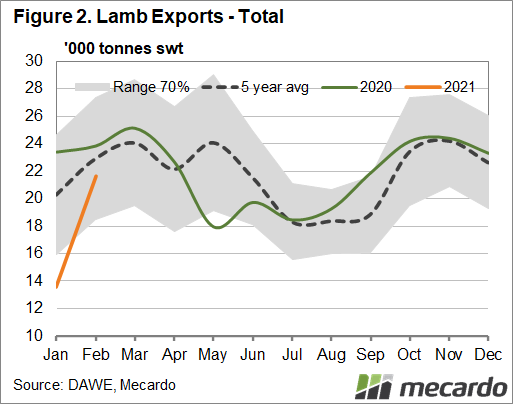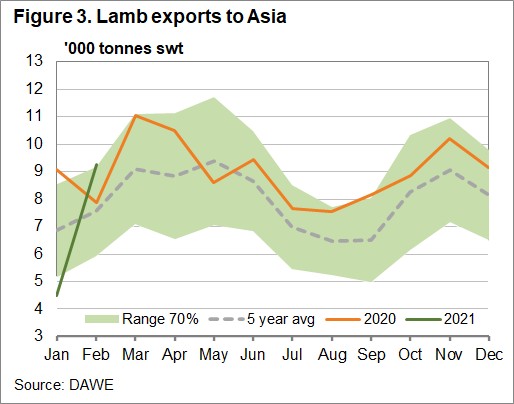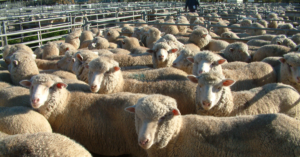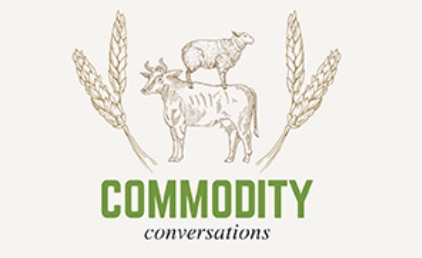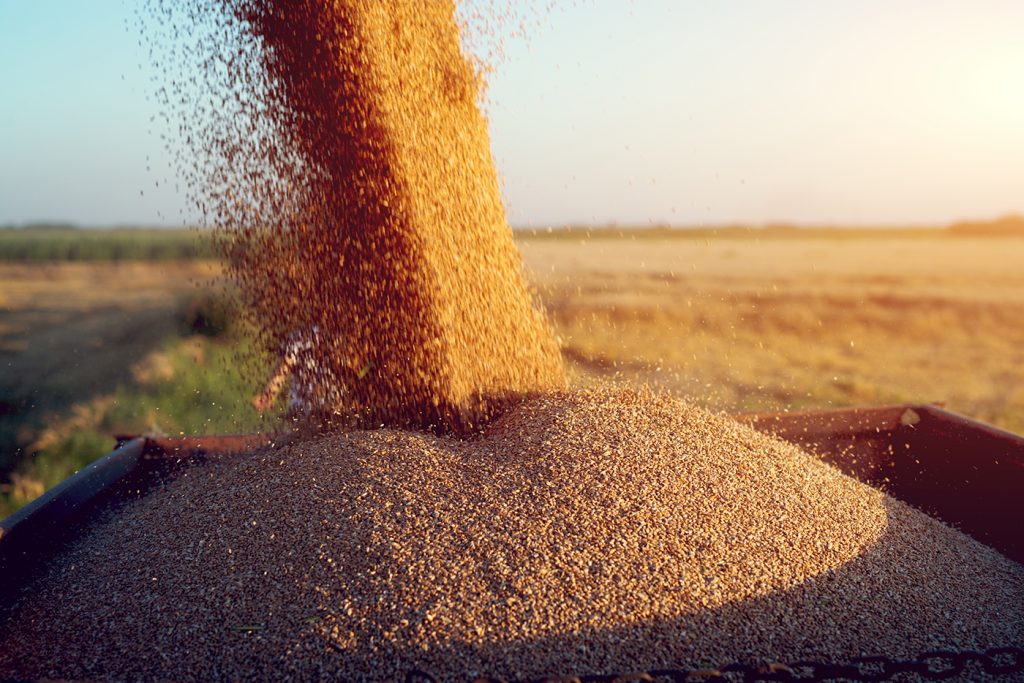Lamb export volumes bounced back in February, painting a much more positive picture than the January figures. With more than 21,000 tonnes shipped weight of Aussie lamb sent overseas, February totals were just 6 percent below the five-year average for the month, compared to January which was 33 percent below the average. Asia has emerged as the clear driver of export demand, taking their highest total on record for February, 25 percent more than their five-year average for the month. However, compared to lamb production, export is still lagging.
Exports to Asia totaled 9,255 tonnes swt in February, up 25 percent from 2020. China makes up more than half of Asia’s total lamb imports from Australia, and therefore this year-on-year increase can partly be put down to Covid-19, with parts of China already in lock-down by February last year. However, it isn’t the whole story as China imported their highest February total on record this year, 28 percent more than their five-year average for the month. Despite trade tensions still making headlines between the two countries, and reports some Australian lamb processors remain unable to access the Chinese market, their demand for our lamb is seemingly on the up.
Also worth mentioning in the Asian market is Papua New Guinea. They have imported 33 percent more Australian lamb so far year-on-year and increased their market share from 1 percent in 2020 to 6 percent for the year-to-date. To put that into perspective, Japan’s market share is currently just 3 percent, as is Qatar’s. On the other end of the scale, Australian lamb exports to the Middle East have plummeted, with their total volume down 47 percent for the year-to-date compared to 2020.
As we can see in Figure 2, exports are well and truly headed in the right direction, and historically now remain at this level or higher through to winter. Of course, the onset of Covid-19 in 2020 has skewed last year’s results, but the five-year average sees volumes above 20,000 tonnes swt for the next few months. This said, if we compare lamb exports with lamb slaughter for the year-to-date, there is still a large discrepancy. So far, we’ve shipped 36 percent less lamb overseas year-on-year, but we’ve only processed 5 percent fewer lambs domestically.
What does it mean?
Continued strong demand from China combined with renewed demand from other parts of Asia are good signs for producers. Exports still have a long way to catch up with previous volumes and current production, but at least they are headed in the right direction.
Have any questions or comments?
Key Points
- Lamb exports on the up; now back in five-year-average territory for February.
- Asia driving demand, led by a significant increase to China.
- Total lamb exports for the year to date down 36 per cent, with slaughter down only 5 percent.
Click on figure to expand
Click on figure to expand
Click on figure to expand
Data sources: MLA, Mecardo





